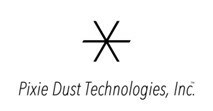Academic Report by Pixie Dust Technologies, Inc. Showcases Applicability of Gamma Wave Sound
This study, a collaboration with the University of Electro-Communications, a National University Corporation, Nara Medical University, and Shionogi & Co., Ltd., a pharmaceutical company in
The study utilized audio from television news and music programs, separating voices from background. The background sound was amplitude-modulated at 40 Hz - a novel technique patented in
"This study's findings are significant in confirming that Gamma Wave Sound can synchronize brain waves in both young and older individuals," commented Chief Research Officer of the Company, Takayuki Hoshi. "We aim to further our research on Gamma Wave Sound and contribute to dementia prevention strategies."
Certain statements contained in this press release are "forward-looking statements" made pursuant to the safe harbor provisions of the Private Securities Litigation Reform Act of 1995. Such forward-looking statements reflect the Company's current expectations or beliefs concerning future events and actual events may differ materially from current expectations. Any such forward-looking statements are subject to various risks and uncertainties, including the strength of the economy, changes to the market for securities, political or financial instability and other factors which are set forth in the Company's Annual Report on Form 20-F for the year ended April 30, 2023 (File No. 001-41749) filed with the SEC, and in all filings with the SEC made by the Company subsequent to the filing thereof. The Company does not undertake to publicly update or revise its forward-looking statements, whether as a result of new information, future events or otherwise.
Pixie Dust Technologies, Inc. is a Japanese technology company that focuses on commercializing innovative products and materials utilizing proprietary wave technology. The Company is currently focusing on two areas of product development: (1) "Personal Care & Diversity" - where wave control technology is applied to mechanobiology and intervention/assistance in vision, hearing, and touch; and (2) "Workspace & Digital Transformation" - where metamaterials (technology that creates properties through structure rather than material) and solutions to commercial design problems, such as in offices or construction sites, are applied.
![]() View original content to download multimedia:https://www.prnewswire.com/news-releases/academic-report-by-pixie-dust-technologies-inc-showcases-applicability-of-gamma-wave-sound-302051543.html
View original content to download multimedia:https://www.prnewswire.com/news-releases/academic-report-by-pixie-dust-technologies-inc-showcases-applicability-of-gamma-wave-sound-302051543.html
SOURCE Pixie Dust Technologies







